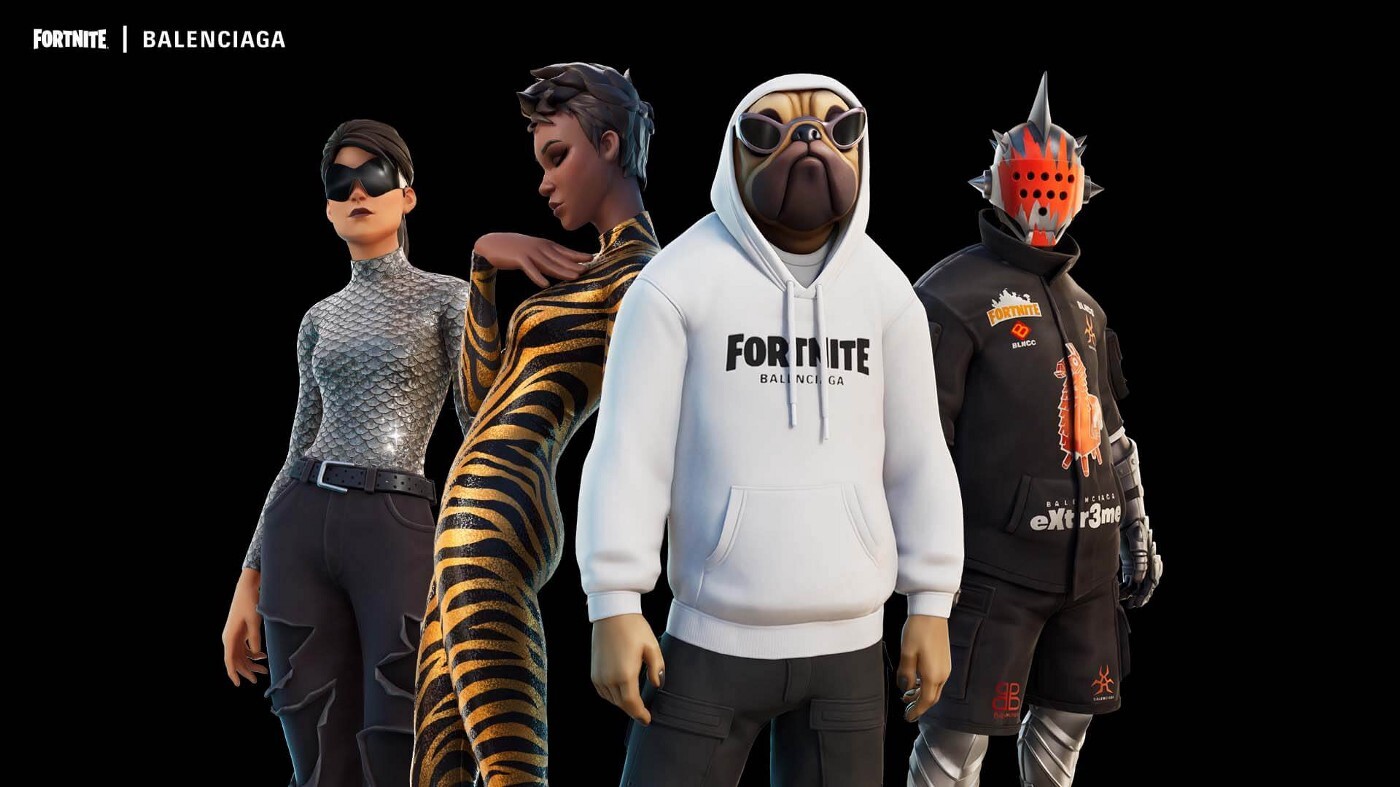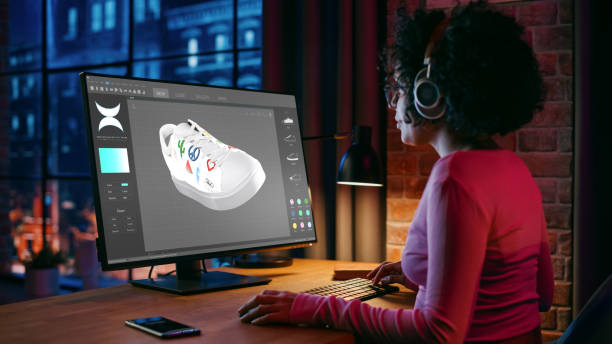WEB 3.0 – DIGITAL FASHION
Virtual reality is the cornerstone of the metaverse. As our lives become increasingly remote, both augmented and virtual realities are turning into actuality. Thus, influencing every part of our existence, including work, travel, leisure/gaming, and even fashion.

In May 2014, the first NFT, “Quantum” was created as a harmless piece of digital art by Kevin McCoy. Little did the world know that naive creativity of McCoy would be the groundwork of what is posing to be the future of the internet. Now, as the idea of the metaverse takes a place in our everyday lives, we are gradually becoming more comfortable connecting and interacting in virtual spaces, as avatars.
Before the metaverse, these avatars were simple 2D representations of us or a fictional character (as seen in games). Now, 3D versions of these avatars exist.
And they are doing more than just existing. They are representing us better than ever before. Therefore, we want them to show some admirable traits that reflect our personality, character, style, and everything we are as individuals. And nothing creates a perfect reflection of these traits like our fashion sense.
Gradually, big fashion brands are realizing the need for virtual avatars to represent their owners’ fashion senses. Interestingly, an entirely new industry has been created to meet this need: the digital fashion industry.
This article is a highlight of this digital fashion industry, its interrelation with NFTs, and a glance into their inseparable future.
The Digital Fashion Industry So Far
Although the idea of the metaverse has existed since 1992 and was loudened by the advent of blockchain, the possibility of fashion thriving in the space was inspired by The Fabricant, in 2019, after it sold a virtual dress on the Ethereum blockchain for $9,500.
Zuckerberg’s presentation
Two years later, Zuckerberg’s 2021 presentation, revealing the need for virtual avatars to have a dress sense, brought the potential of the metaverse to the attention of big fashion brands. Immediately after the announcement, Nike began making moves in preparation to explore the metaverse.
As a first step, it acquired the studio for virtual sneakers and collectables, RTKFT, in December 2021. However, Nike was not the earliest to the party.
In May 2021, Gucci partnered with Roblox to launch the Gucci Garden. The two-week campaign received a wild reception, attracting 19 million visitors to the virtual fashion garden. Nike had also partnered with Roblox to create Nikeland, a sports game where all players are suited in Nike gear.
Speaking of (or more literally, writing about) gamers, the metaverse may not be an entirely new feel or look. Gamers have been accustomed to avatars with variable skins. But luxury outfits offered as an alternative to the regular skins is a relatively new concept.
In 2019, Louis Vuitton released a League of Legends collection while Moschino released a set of outfits for The Sims. Two years later, Balenciaga partnered with Epic Games to bring luxury skins to one of the world’s most played video games, Fortnite.
While Nike, Balenciaga, LV, and Gucci had stomped the virtual world earlier than other brands, they may have taken a less effective approach. Other household fashion brands and startups are adopting a slightly different strategy by integrating NFTs into their digital fashion game.
NFTs and Digital Fashion
It’s not a coincidence that the first digital dress was an NFT. Creating a valuable piece of art or fashion exposes it to counterfeiting. Creating them as NFTs provides a sense of security since each tokenized item has an unduplicable record of ownership securely stored and accessible on the blockchain.
Blockchain startups already know this and big fashion brands are beginning to recognize it as a possible way to reduce knock-offs.
Adidas led the charge when it created its Into The Metaverse collection in partnership with Coinbase and The Sandbox. The sportswear company sold all 30,000 items in its NFT collection for a total of $23.5 million by launch day in December 2021.
Big fashion brands have realized that NFT-secure virtual clothing presents intangible value driven by scarcity, a factor that is hard to maintain in the real world due to imitations. This scarcity factor inspired by blockchain security is driving a virtual collectable market beyond fashion.
As a matter of fact, the virtual goods market is estimated to be worth $190 billion by 2025, according to CB Insights’ Industry Analyst Consensus. It is a common belief that a majority of these virtual goods will be classified as digital fashion because the industry has found a model that encourages the wild adoption of NFTs and wearables.
Wear-to-Earn Model as a Digital Fashion Growth Strategy
Imagine sports celebrity endorsement deals with Nike. These sports superstars are paid to wear Nike gear to optimize their influence on followers. Endorsement deals have scrutinous legal fine prints but it is the closest thing to the wear-to-earn model in the real world. Runway models are another example.
This age-long brand influencing strategy is proving useful in the metaverse, especially in the digital fashion industry.
The wear-to-earn model is a spin-off of the play-to-earn model that has existed in the gaming industry only in that users are allowed to earn digital tokens or physical rewards by owning and wearing fashion NFTs on the metaverse. For instance, owning one of Adidas’ Into The Metaverse NFTs may grant you exclusive access to physical Adidas products in the near future.
In February 2022, Dolce & Gabbana launched its DGFamily NFT Community on the Polygon blockchain. This NFT community will host NFT drops that allow owners to have access to exclusive physical apparel that is not available otherwise.
Therefore, digital fashion NFTs and physical fashion are still intertwined. But for how long? Will the growth in fashion NFTs eventually drive a corresponding growth in the physical fashion industry long into the future?
In anticipation of this promising growth, big brands are dusting their hats to join the game. Simultaneously, fashion-inclined blockchain startups are positioning themselves strategically to gain competitive advantages.
A Glance At the Future of the NFT-Fashion Alliance
Statistics show that the potential US market expenditure for digital apparel in the metaverse is up to $594 billion and predicts that 23% of all Americans will spend a lot of money on collectables and accessories on the metaverse. But what are businesses and consumers doing to instigate these optimistic predictions?
Digital wearables and NFTs are receiving wild adoption. Recently, Burberry announced a collaboration with Mythical Games to launch its NFT collections on Blankos Block Party, a blockchain-based video game. The partnership, dubbed “Burberry Blanko,” will allow gamers to purchase accessories like wristbands, watches, etc for their in-game avatars.
Soon enough, these various digital apparel and collectables will be interoperable, and accessible to people in various game scenes on the metaverse.
Then, the problem of storage and organization could arise. However, a solution exists. The Sydney-based startup, Neuno is developing a 3D wardrobe technology that allows users to buy and store iconic digital outfits. It is currently working with a handful of luxury fashion brands to launch NFTs for this specific purpose. But that isn’t all.
As enthusiasts gain a granular understanding of the metaverse and NFTs, “con developers” are crafting NFT apparel that is identical to those created by iconic brands. In March 2021, France-based startup, Arianee, raised $9.6 million in seed funding to solve this problem.
NFT-based watermarks
The startup is developing a digital protocol that utilizes NFT-based watermarks to authenticate luxury items. By May 2022, it has raised $21 million in funding. Currently, Ariana is working with household brands like Richemont Group and Breitling.
Several other startups like Neuno and Arianee are springing up in the digital fashion and NFT spaces. Aves Lair is positioned to help these innovative startups build remarkable technologies that could advance the digital fashion industry by providing funding and active mentorship to founders.
A futuristic division of our fund, the Aves Lair Research Lab, works closely with these startups and mentors toward solutions. The important problem in the Web3 space, optimizing opportunities in emerging technologies. Advancing the science and technology of the next-generation internet. Apply to our Accelerator Program today to gain access to funding and outstanding mentors in the NFT and blockchain space.

